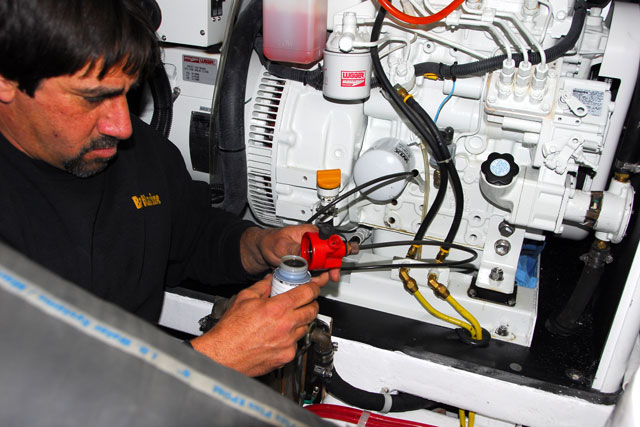
Diesel Maintenance Tips
It’s like having a mechanic’s crystal ball. Fluid analysis allows you to peer inside an engine, transmission, or hydraulic system to determine whether everything is running smoothly or if a failure looms on the horizon.
Fluid analysis was introduced over 50 years ago with the jet age; the lubrication systems in first-generation turbines for carrier-borne aircraft were especially sensitive to water, salt, and metallic debris. Today, the science of tribology—which analyzes the friction of machinery components and their fluids, including crankcase oil, transmission fluid, coolant, and hydraulic fluid—is well established in the mechanical world.
The return on investment with fluid analysis can be substantial. Analyzing a few ounces of crankcase oil, for instance, can yield reams of information about the current health of an engine and how it’s been maintained. For instance, sodium found in an engine’s lubricating oil may indicate the ingestion of salt-laden mist; this can happen when water leaks onto the top of an engine and is cooked off. Glycol contamination often spells trouble around the cylinder head gasket.
Wear metals, including iron, chrome, nickel, copper, lead, tin, and aluminum, each tell a different story about a component within the engine, from pistons and rings to bearings and valves. Contaminant metals—silicon, sodium, and potassium, for instance—tell a different story, as they’re introduced from such outside sources as dust, seawater, and coolant. When compared to the number of hours accrued by the sample, the quantity of metal therein determines whether there should be cause for concern. Still other contaminants, such as fuel and soot, and imbalances such as acidity and viscosity can indicate malfunctioning fuel-injection systems, the use of incorrect stock oil, or simply that the oil in the engine is old and worn out.
Fluid detective work doesn’t end with crankcase oil. Transmission fluid and coolant also provide fertile ground for testing. Transmission-fluid analysis can often detect issues associated with bearings, clutches, shift-mechanism adjustment, damaged gears, and overheating. Many transmissions include some type of cooler; however, if it’s not working properly, oil can overheat and lose some of its lubricating properties. An improperly adjusted shift cable can cause the same problem. Coolant includes additives that inhibit rust and corrosion; however, over time, these become depleted. Conventional wisdom dictates that cooling systems be flushed and the coolant replaced every two years, but that figure is very conservative. An analysis of the coolant can stave off this service if it’s unnecessary, often paying for itself.
Fluid analysis’s greatest advantage lies in its ability to predict failures before they occur. If your engine’s crankcase oil is diluted with diesel fuel because of a dribbling injector, the problem can be repaired inexpensively—if it’s discovered early. If the defect remains hidden, however, the loss of lubricity could lead to rapid bearing wear and, ultimately, catastrophic engine failure. The average fluid analysis costs about $25, making it a worthwhile investment with every oil change and for coolant and transmission fluid on an annual basis. Here are the websites for the two labs I use on a regular basis: www.polarislabs.com and www.blackstone-labs.com.
Steve D’Antonio offers services for boat owners and buyers through Steve D’Antonio Marine Consulting (www.stevedmarineconsulting.com).
Still haven’t solved the problem? Use exhause color to troubleshoot your diesel engine.
Click here to find more maintenance tips.








